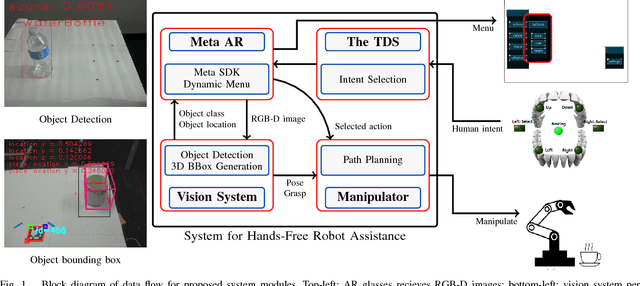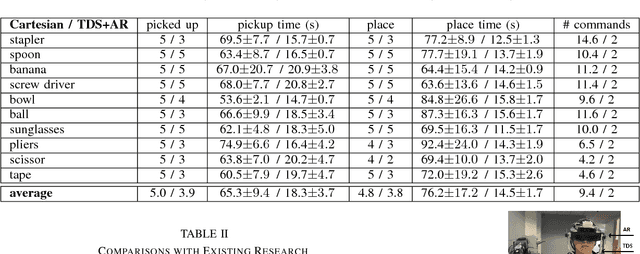Zhenxuan Zhang
Dynamic Dual Buffer with Divide-and-Conquer Strategy for Online Continual Learning
May 23, 2025Abstract:Online Continual Learning (OCL) presents a complex learning environment in which new data arrives in a batch-to-batch online format, and the risk of catastrophic forgetting can significantly impair model efficacy. In this study, we address OCL by introducing an innovative memory framework that incorporates a short-term memory system to retain dynamic information and a long-term memory system to archive enduring knowledge. Specifically, the long-term memory system comprises a collection of sub-memory buffers, each linked to a cluster prototype and designed to retain data samples from distinct categories. We propose a novel $K$-means-based sample selection method to identify cluster prototypes for each encountered category. To safeguard essential and critical samples, we introduce a novel memory optimisation strategy that selectively retains samples in the appropriate sub-memory buffer by evaluating each cluster prototype against incoming samples through an optimal transportation mechanism. This approach specifically promotes each sub-memory buffer to retain data samples that exhibit significant discrepancies from the corresponding cluster prototype, thereby ensuring the preservation of semantically rich information. In addition, we propose a novel Divide-and-Conquer (DAC) approach that formulates the memory updating as an optimisation problem and divides it into several subproblems. As a result, the proposed DAC approach can solve these subproblems separately and thus can significantly reduce computations of the proposed memory updating process. We conduct a series of experiments across standard and imbalanced learning settings, and the empirical findings indicate that the proposed memory framework achieves state-of-the-art performance in both learning contexts.
Reason Like a Radiologist: Chain-of-Thought and Reinforcement Learning for Verifiable Report Generation
Apr 25, 2025Abstract:Radiology report generation is critical for efficiency but current models lack the structured reasoning of experts, hindering clinical trust and explainability by failing to link visual findings to precise anatomical locations. This paper introduces BoxMed-RL, a groundbreaking unified training framework for generating spatially verifiable and explainable radiology reports. Built on a large vision-language model, BoxMed-RL revolutionizes report generation through two integrated phases: (1) In the Pretraining Phase, we refine the model via medical concept learning, using Chain-of-Thought supervision to internalize the radiologist-like workflow, followed by spatially verifiable reinforcement, which applies reinforcement learning to align medical findings with bounding boxes. (2) In the Downstream Adapter Phase, we freeze the pretrained weights and train a downstream adapter to ensure fluent and clinically credible reports. This framework precisely mimics radiologists' workflow, compelling the model to connect high-level medical concepts with definitive anatomical evidence. Extensive experiments on public datasets demonstrate that BoxMed-RL achieves an average 7% improvement in both METEOR and ROUGE-L metrics compared to state-of-the-art methods. An average 5% improvement in large language model-based metrics further underscores BoxMed-RL's robustness in generating high-quality radiology reports.
Task-oriented Uncertainty Collaborative Learning for Label-Efficient Brain Tumor Segmentation
Mar 07, 2025



Abstract:Multi-contrast magnetic resonance imaging (MRI) plays a vital role in brain tumor segmentation and diagnosis by leveraging complementary information from different contrasts. Each contrast highlights specific tumor characteristics, enabling a comprehensive understanding of tumor morphology, edema, and pathological heterogeneity. However, existing methods still face the challenges of multi-level specificity perception across different contrasts, especially with limited annotations. These challenges include data heterogeneity, granularity differences, and interference from redundant information. To address these limitations, we propose a Task-oriented Uncertainty Collaborative Learning (TUCL) framework for multi-contrast MRI segmentation. TUCL introduces a task-oriented prompt attention (TPA) module with intra-prompt and cross-prompt attention mechanisms to dynamically model feature interactions across contrasts and tasks. Additionally, a cyclic process is designed to map the predictions back to the prompt to ensure that the prompts are effectively utilized. In the decoding stage, the TUCL framework proposes a dual-path uncertainty refinement (DUR) strategy which ensures robust segmentation by refining predictions iteratively. Extensive experimental results on limited labeled data demonstrate that TUCL significantly improves segmentation accuracy (88.2\% in Dice and 10.853 mm in HD95). It shows that TUCL has the potential to extract multi-contrast information and reduce the reliance on extensive annotations. The code is available at: https://github.com/Zhenxuan-Zhang/TUCL_BrainSeg.
GEMA-Score: Granular Explainable Multi-Agent Score for Radiology Report Evaluation
Mar 07, 2025



Abstract:Automatic medical report generation supports clinical diagnosis, reduces the workload of radiologists, and holds the promise of improving diagnosis consistency. However, existing evaluation metrics primarily assess the accuracy of key medical information coverage in generated reports compared to human-written reports, while overlooking crucial details such as the location and certainty of reported abnormalities. These limitations hinder the comprehensive assessment of the reliability of generated reports and pose risks in their selection for clinical use. Therefore, we propose a Granular Explainable Multi-Agent Score (GEMA-Score) in this paper, which conducts both objective quantification and subjective evaluation through a large language model-based multi-agent workflow. Our GEMA-Score parses structured reports and employs NER-F1 calculations through interactive exchanges of information among agents to assess disease diagnosis, location, severity, and uncertainty. Additionally, an LLM-based scoring agent evaluates completeness, readability, and clinical terminology while providing explanatory feedback. Extensive experiments validate that GEMA-Score achieves the highest correlation with human expert evaluations on a public dataset, demonstrating its effectiveness in clinical scoring (Kendall coefficient = 0.70 for Rexval dataset and Kendall coefficient = 0.54 for RadEvalX dataset). The anonymous project demo is available at: https://github.com/Zhenxuan-Zhang/GEMA_score.
Pretext Task Adversarial Learning for Unpaired Low-field to Ultra High-field MRI Synthesis
Mar 07, 2025Abstract:Given the scarcity and cost of high-field MRI, the synthesis of high-field MRI from low-field MRI holds significant potential when there is limited data for training downstream tasks (e.g. segmentation). Low-field MRI often suffers from a reduced signal-to-noise ratio (SNR) and spatial resolution compared to high-field MRI. However, synthesizing high-field MRI data presents challenges. These involve aligning image features across domains while preserving anatomical accuracy and enhancing fine details. To address these challenges, we propose a Pretext Task Adversarial (PTA) learning framework for high-field MRI synthesis from low-field MRI data. The framework comprises three processes: (1) The slice-wise gap perception (SGP) network aligns the slice inconsistencies of low-field and high-field datasets based on contrastive learning. (2) The local structure correction (LSC) network extracts local structures by restoring the locally rotated and masked images. (3) The pretext task-guided adversarial training process introduces additional supervision and incorporates a discriminator to improve image realism. Extensive experiments on low-field to ultra high-field task demonstrate the effectiveness of our method, achieving state-of-the-art performance (16.892 in FID, 1.933 in IS, and 0.324 in MS-SSIM). This enables the generation of high-quality high-field-like MRI data from low-field MRI data to augment training datasets for downstream tasks. The code is available at: https://github.com/Zhenxuan-Zhang/PTA4Unpaired_HF_MRI_SYN.
Lightweight Hypercomplex MRI Reconstruction: A Generalized Kronecker-Parameterized Approach
Mar 07, 2025Abstract:Magnetic Resonance Imaging (MRI) is crucial for clinical diagnostics but is hindered by prolonged scan times. Current deep learning models enhance MRI reconstruction but are often memory-intensive and unsuitable for resource-limited systems. This paper introduces a lightweight MRI reconstruction model leveraging Kronecker-Parameterized Hypercomplex Neural Networks to achieve high performance with reduced parameters. By integrating Kronecker-based modules, including Kronecker MLP, Kronecker Window Attention, and Kronecker Convolution, the proposed model efficiently extracts spatial features while preserving representational power. We introduce Kronecker U-Net and Kronecker SwinMR, which maintain high reconstruction quality with approximately 50% fewer parameters compared to existing models. Experimental evaluation on the FastMRI dataset demonstrates competitive PSNR, SSIM, and LPIPS metrics, even at high acceleration factors (8x and 16x), with no significant performance drop. Additionally, Kronecker variants exhibit superior generalization and reduced overfitting on limited datasets, facilitating efficient MRI reconstruction on hardware-constrained systems. This approach sets a new benchmark for parameter-efficient medical imaging models.
RuozhiBench: Evaluating LLMs with Logical Fallacies and Misleading Premises
Feb 18, 2025Abstract:Recent advances in large language models (LLMs) have shown that they can answer questions requiring complex reasoning. However, their ability to identify and respond to text containing logical fallacies or deliberately misleading premises remains less studied. To address this gap, we introduce RuozhiBench, a bilingual dataset comprising 677 carefully curated questions that contain various forms of deceptive reasoning, meticulously crafted through extensive human effort and expert review. In a comprehensive evaluation of 17 LLMs from 5 Series over RuozhiBench using both open-ended and two-choice formats, we conduct extensive analyses on evaluation protocols and result patterns. Despite their high scores on conventional benchmarks, these models showed limited ability to detect and reason correctly about logical fallacies, with even the best-performing model, Claude-3-haiku, achieving only 62% accuracy compared to the human of more than 90%.
Libra-Leaderboard: Towards Responsible AI through a Balanced Leaderboard of Safety and Capability
Dec 24, 2024



Abstract:To address this gap, we introduce Libra-Leaderboard, a comprehensive framework designed to rank LLMs through a balanced evaluation of performance and safety. Combining a dynamic leaderboard with an interactive LLM arena, Libra-Leaderboard encourages the joint optimization of capability and safety. Unlike traditional approaches that average performance and safety metrics, Libra-Leaderboard uses a distance-to-optimal-score method to calculate the overall rankings. This approach incentivizes models to achieve a balance rather than excelling in one dimension at the expense of some other ones. In the first release, Libra-Leaderboard evaluates 26 mainstream LLMs from 14 leading organizations, identifying critical safety challenges even in state-of-the-art models.
A Chinese Dataset for Evaluating the Safeguards in Large Language Models
Feb 19, 2024



Abstract:Many studies have demonstrated that large language models (LLMs) can produce harmful responses, exposing users to unexpected risks when LLMs are deployed. Previous studies have proposed comprehensive taxonomies of the risks posed by LLMs, as well as corresponding prompts that can be used to examine the safety mechanisms of LLMs. However, the focus has been almost exclusively on English, and little has been explored for other languages. Here we aim to bridge this gap. We first introduce a dataset for the safety evaluation of Chinese LLMs, and then extend it to two other scenarios that can be used to better identify false negative and false positive examples in terms of risky prompt rejections. We further present a set of fine-grained safety assessment criteria for each risk type, facilitating both manual annotation and automatic evaluation in terms of LLM response harmfulness. Our experiments on five LLMs show that region-specific risks are the prevalent type of risk, presenting the major issue with all Chinese LLMs we experimented with. Warning: this paper contains example data that may be offensive, harmful, or biased.
The Helping Hand: An Assistive Manipulation Framework Using Augmented Reality and a Tongue-Drive Interfaces
Aug 24, 2018


Abstract:A human-in-the-loop system is proposed to enable collaborative manipulation tasks for person with physical disabilities. Studies show that the cognitive burden of subject reduces with increased autonomy of assistive system. Our framework obtains high-level intent from the user to specify manipulation tasks. The system processes sensor input to interpret the user's environment. Augmented reality glasses provide ego-centric visual feedback of the interpretation and summarize robot affordances on a menu. A tongue drive system serves as the input modality for triggering a robotic arm to execute the tasks. Assistance experiments compare the system to Cartesian control and to state-of-the-art approaches. Our system achieves competitive results with faster completion time by simplifying manipulation tasks.
 Add to Chrome
Add to Chrome Add to Firefox
Add to Firefox Add to Edge
Add to Edge